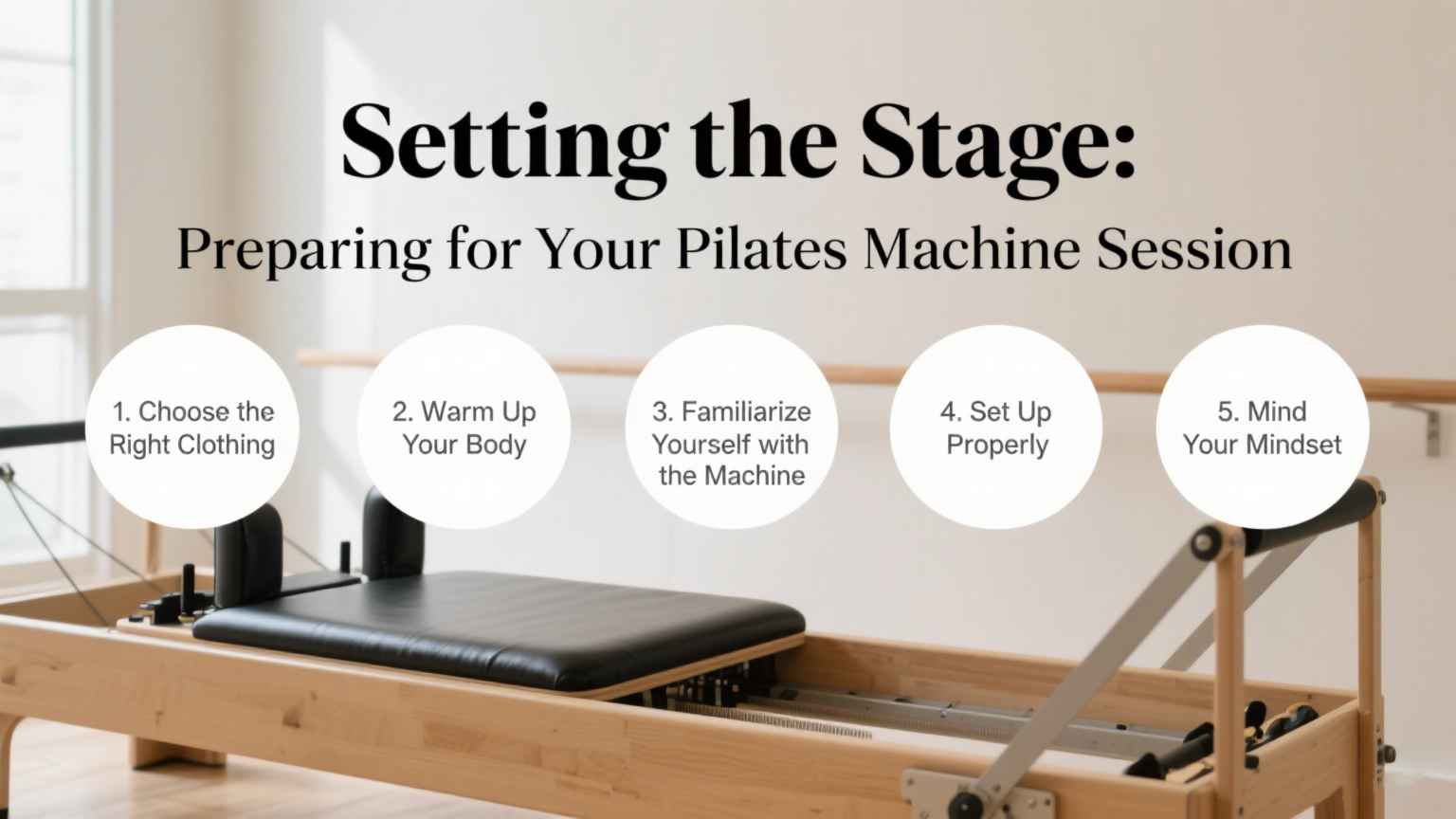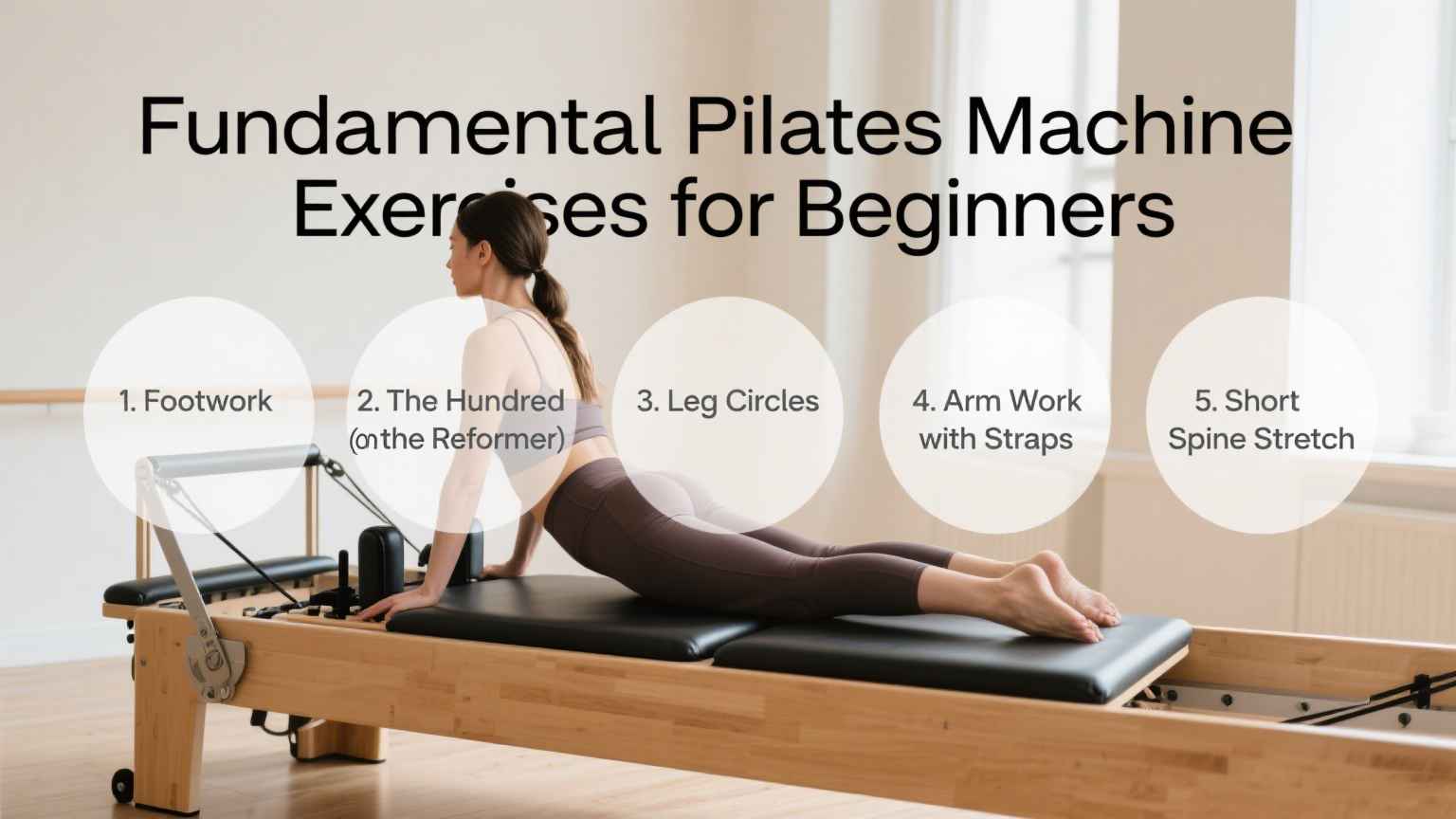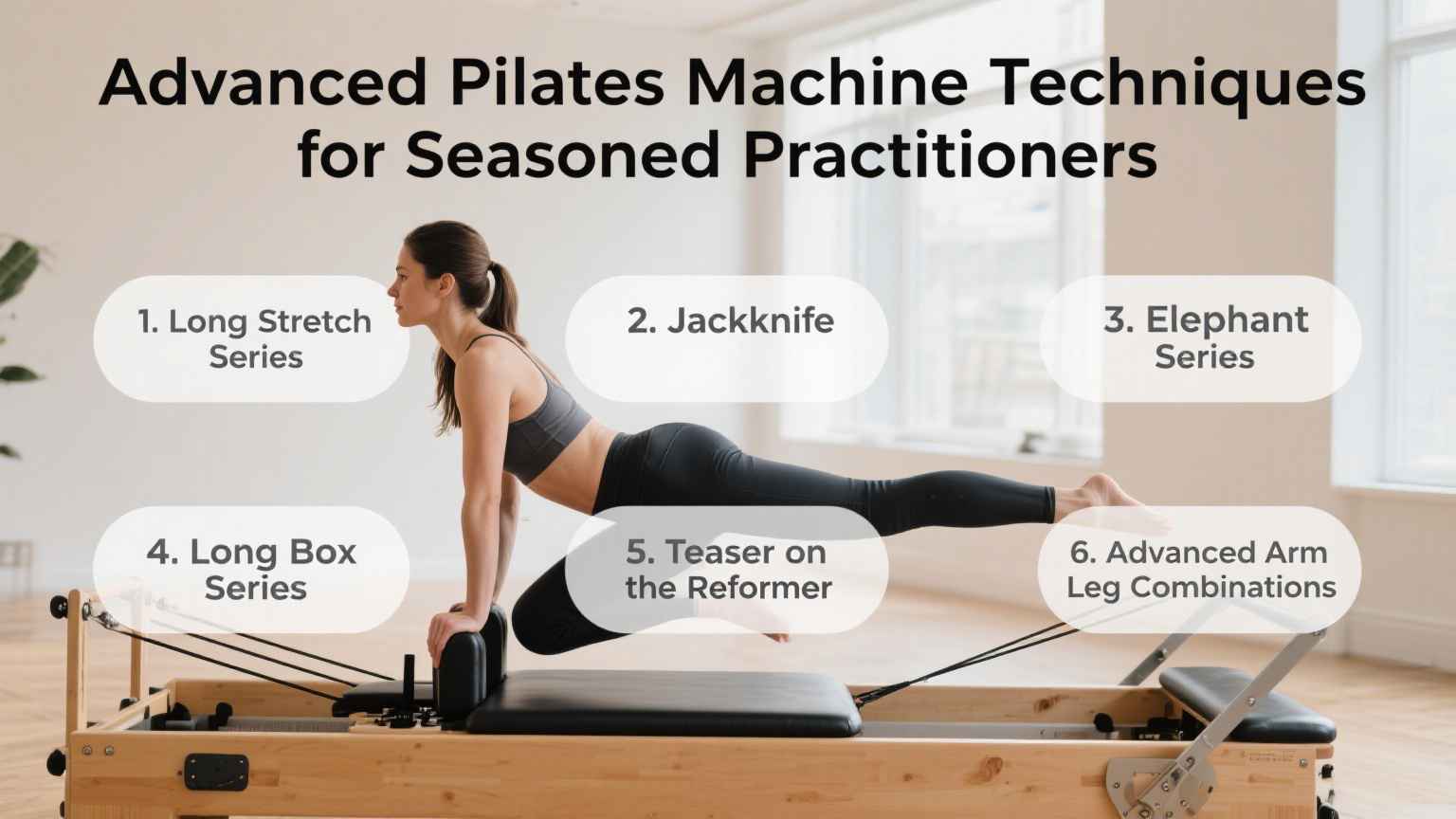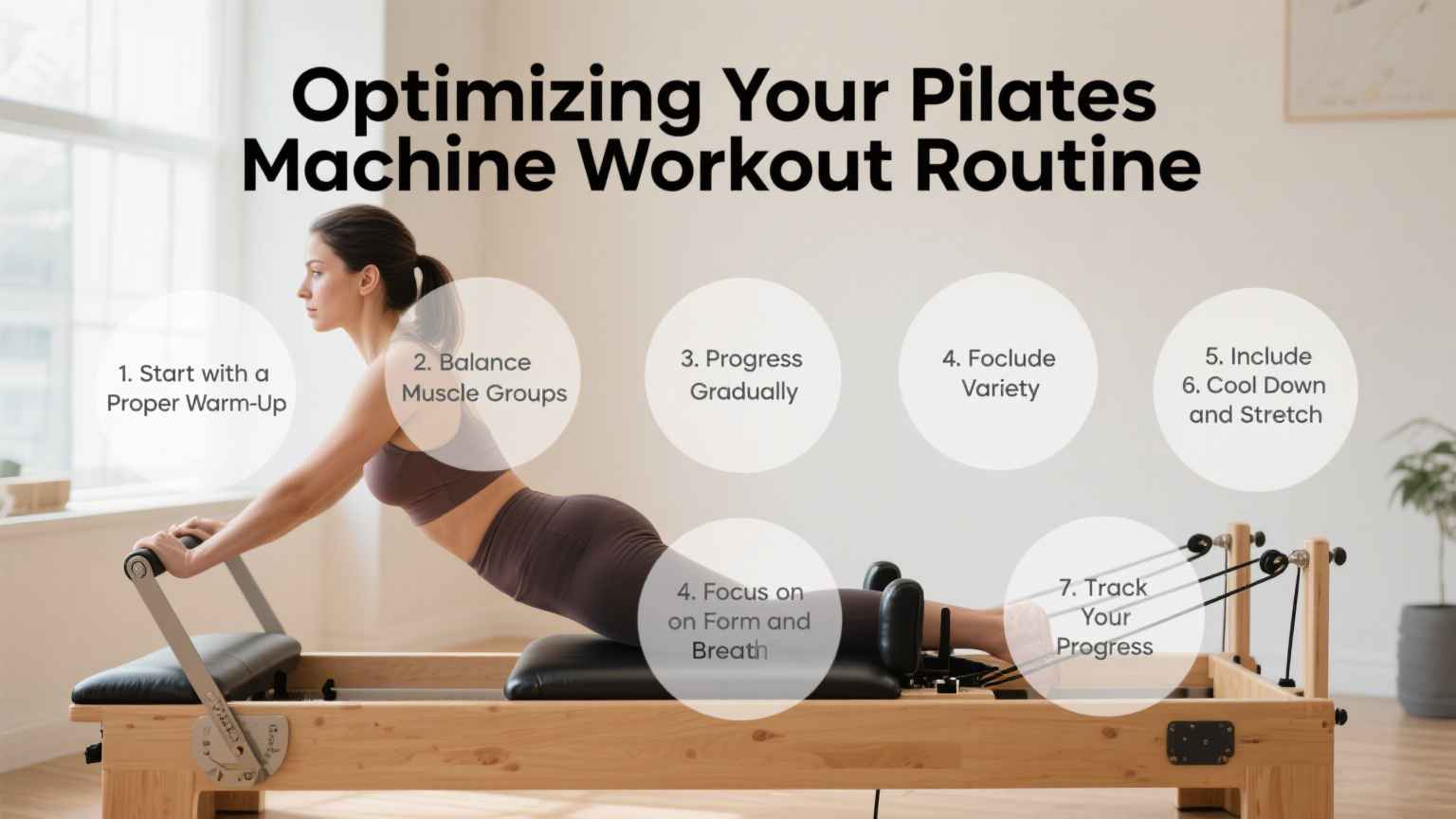The Pilates Reformer is a versatile tool that can transform your fitness routine when used correctly. Focusing on controlled movements, proper alignment, and progressive resistance ensures you engage your muscles efficiently while reducing the risk of injury.
✅ Demystifying the Pilates Machine
The Pilates machine, often referred to as a Reformer, is far more than just a piece of gym equipment. It's a precision tool designed to enhance strength, flexibility, balance, and posture through controlled, low-impact movements. Unlike traditional weights or cardio machines, the Pilates Reformer uses sliding platforms, springs, straps, and pulleys to create adjustable resistance that challenges muscles safely and efficiently.
Beginners might find the machine intimidating at first, but its adaptability makes it suitable for all fitness levels. From gentle rehabilitation exercises to advanced strength training, the Reformer offers a full-body workout that emphasizes core engagement and proper alignment, making it ideal for both fitness enthusiasts and those recovering from injuries.
✅ Setting the Stage: Preparing for Your Pilates Machine Session
A successful Pilates machine session begins before you even step onto the Reformer. Proper preparation helps prevent injury, enhances your performance, and ensures you get the most out of each movement.

1. Choose the Right Clothing
Wear form-fitting, flexible clothing that allows full range of motion. Avoid baggy items that could get caught in the machine's moving parts.
2. Warm Up Your Body
Even a few minutes of light stretching or gentle mobility exercises primes your muscles and joints for the workout ahead. Focus on areas like your spine, shoulders, hips, and core.
3. Familiarize Yourself with the Machine
Take a moment to understand the Reformer's components—the sliding carriage, springs, straps, and footbar. Knowing how each part works ensures a safe and efficient session.
4. Set Up Properly
Adjust spring resistance, footbar height, and strap length according to your body and skill level. Proper setup is key to effective, controlled movements.
5. Mind Your Mindset
Pilates emphasizes focus and body awareness. Approach your session with a calm, attentive mindset to maximize both mental and physical benefits.
✅ Fundamental Pilates Machine Exercises for Beginners
Starting on the Pilates machine can feel intimidating, but mastering a few fundamental exercises lays the foundation for strength, flexibility, and body awareness. Here are some beginner-friendly moves to get you started:

1. Footwork
A classic starting exercise on the Reformer. Lying on the carriage with feet on the footbar, press out and return slowly. This strengthens legs, glutes, and core while teaching control and alignment.
2. The Hundred (on the Reformer)
This classic Pilates move adapts easily to the machine. It builds core endurance and stability while improving circulation. Focus on breathing rhythm and abdominal engagement.
3. Leg Circles
Lying on your back with legs in straps, perform controlled circles. This improves hip mobility, core strength, and leg alignment. Start small and gradually increase range of motion.
4. Arm Work with Straps
Using the hand straps, practice pressing, pulling, or opening movements. These exercises strengthen shoulders, arms, and upper back, while promoting posture and control.
5. Short Spine Stretch
A gentle but effective spinal articulation exercise. Lying on the carriage, lift the hips and stretch through the spine, engaging core and glutes. It improves spinal mobility and flexibility safely.
We are committed to delivering exceptional support and
top-tier service whenever you need it!
✅ Advanced Pilates Machine Techniques for Seasoned Practitioners
Once you've mastered the fundamentals, the Pilates machine offers a wide range of advanced exercises designed to challenge strength, flexibility, balance, and coordination. These movements require greater body awareness and control, making them ideal for experienced practitioners.

1. Long Stretch Series
Performed on the Reformer with the carriage moving away and toward you, this series targets core, shoulders, and stability. It demands precise alignment and engages the entire body in dynamic plank-like positions.
2. Jackknife
Lifting the hips and extending the legs overhead while controlling the carriage strengthens the core, spinal extensors, and hamstrings. Timing and control are crucial to prevent strain.
3. Elephant
A hamstring and core-intensive move where your hands remain on the footbar while the hips lift high, and the carriage moves back and forth. This improves flexibility, shoulder stability, and coordination.
4. Long Box Series
Using the long box on the Reformer, perform exercises like Pulling Straps, T-Strap, and Backstroke to enhance upper body strength, spinal mobility, and balance.
5. Teaser on the Reformer
An advanced core move adapted from mat Pilates. Balancing on the carriage, lift the torso and legs into a V-shape. This demands strong abdominal control, leg strength, and focus.
6. Advanced Arm and Leg Combinations
Integrating straps and springs, practitioners can perform simultaneous upper and lower body movements that enhance strength, coordination, and muscular endurance.
✅ Optimizing Your Pilates Machine Workout Routine
A well-structured Pilates machine routine can maximize results, improve body awareness, and prevent injury. Whether you're a beginner or advanced practitioner, strategic planning and mindful execution are key.

1. Start with a Proper Warm-Up
Even a brief warm-up of dynamic stretches or light Reformer movements primes the muscles, improves circulation, and prepares the joints for more intense exercises.
2. Balance Muscle Groups
Design your routine to target all major muscle groups—core, legs, arms, and back. Include both push and pull movements to maintain muscular balance and prevent overuse injuries.
3. Progress Gradually
A gentle but effective spinal articulation exercise. Lying on the carriage, lift the hips and stretch through the spine, engaging core and glutes. It improves spinal mobility and flexibility safely.
4. Focus on Form and Breath
Pilates emphasizes precision, alignment, and controlled breathing. Always prioritize proper form over the number of repetitions or intensity. Mindful breathing enhances core engagement and movement efficiency.
5. Include Variety
Rotate exercises between footwork, core, spinal articulation, and upper body movements to challenge different muscles and prevent monotony. Incorporate both short, intense sequences and longer, flowing movements.
6. Cool Down and Stretch
End each session with gentle stretches on the Reformer or mat. Cooling down helps relieve muscle tension, improve flexibility, and support recovery.
7. Track Your Progress
Keep a simple log of resistance levels, exercises, and repetitions. Tracking progress allows you to adjust routines, increase challenges, and stay motivated over time.
✅ Conclusion
By practicing consistently and gradually increasing challenges, you can maximize strength, flexibility, and overall body awareness. The Reformer isn't just equipment—it's a pathway to smarter, more effective workouts.

Talk To Our Experts
Connect with an NQ expert to discuss your product needs
and get started on your project.
✅ Common Questions About Pilates Reformer
1. Is the Pilates machine suitable for all age groups?
Yes. Pilates machines, including the Reformer and Cadillac, are low-impact and highly adjustable, making them suitable for children, adults, and seniors. They help strengthen the core, improve posture, increase flexibility, and enhance balance. Seniors can use them for safe mobility exercises, while athletes or younger adults can benefit from strength, endurance, and body control training.
2. How long before I see results from using the machine?
Results vary depending on frequency, intensity, and individual fitness levels. Generally, most people notice improvements in core strength, posture, flexibility, and muscle tone within 4–8 weeks of practicing 2–3 times per week. Consistent practice over several months can lead to more significant changes, including enhanced body alignment and reduced risk of injury.
3. Do I need an instructor to use the Pilates machine?
Yes, especially for beginners. Pilates machines involve springs, straps, and adjustable settings that require proper technique to avoid injury. A certified instructor can guide you on correct posture, resistance levels, and safe progression. Once you're familiar with the equipment, you can perform exercises safely on your own, but initial guidance is highly recommended.
4. Can Pilates machine workouts help in weight loss?
Yes, indirectly. Pilates builds lean muscle, improves metabolism, and encourages better posture, all of which support long-term fat loss. While it's not as high-intensity as cardio, combining Pilates sessions with a balanced diet and aerobic activity can help you achieve weight loss and body toning goals.
5. Is it safe to use the Pilates machine during pregnancy?
Yes, with modifications. Pregnant users should avoid lying flat on their backs after the first trimester and limit deep twisting, intense stretching, or high-impact moves. Prenatal Pilates classes led by a certified instructor are recommended, as they provide safe variations to maintain core strength, improve posture, and reduce back pain during pregnancy.
Post time: Aug-25-2025
